Southwest Michigan field crops update – August 8, 2024
Potato late blight confirmed in another commercial field in St. Joseph County. White mold visibly present in some fields. Tar spot continued to develop.

Weather
This past week saw a couple of main rain events, with the biggest being part of a tornado watch in Van Buren, Kalamazoo and St. Joseph counties. The temperature cooled down considerably and will stabilize in the mid- to upper 70s in most areas. The forecast calls for the possibility of scattered showers of less than 0.25 inch throughout the week.

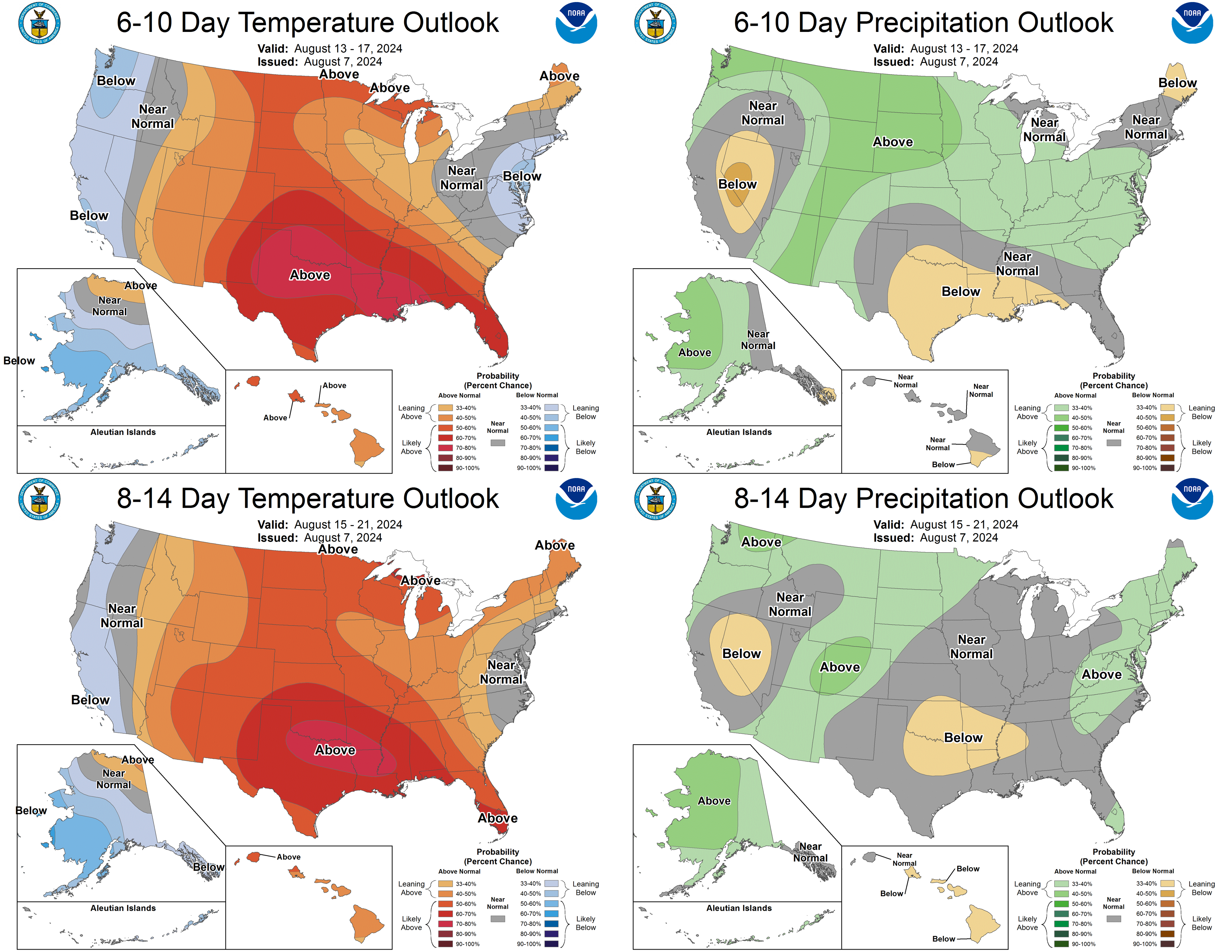
Crops and pests
Soybeans continue to progress toward pod maturity. Some plants have reached R6, which is full seed, but most are at R5, which starts when a seed within the four uppermost nodes on the main stem hits 1/8 inch in length. R5 continues until full seed, at which point R6 begins. At the end of R6, the membrane will detach from the seeds. At R7, one pod anywhere on the plant is at mature pod color.
.jpg?language_id=1)
White mold symptoms are visible in some fields, particularly in depressions or lower ground where water would have pooled more. When scouting for white mold, watch for wilting leaves in the upper canopy and lodged plants. Check under the canopy for white fuzz on the stems. The stems may also have black sclerotia on them. There is no curative treatment for white mold, although irrigation management decisions can help slow down the development of the disease.
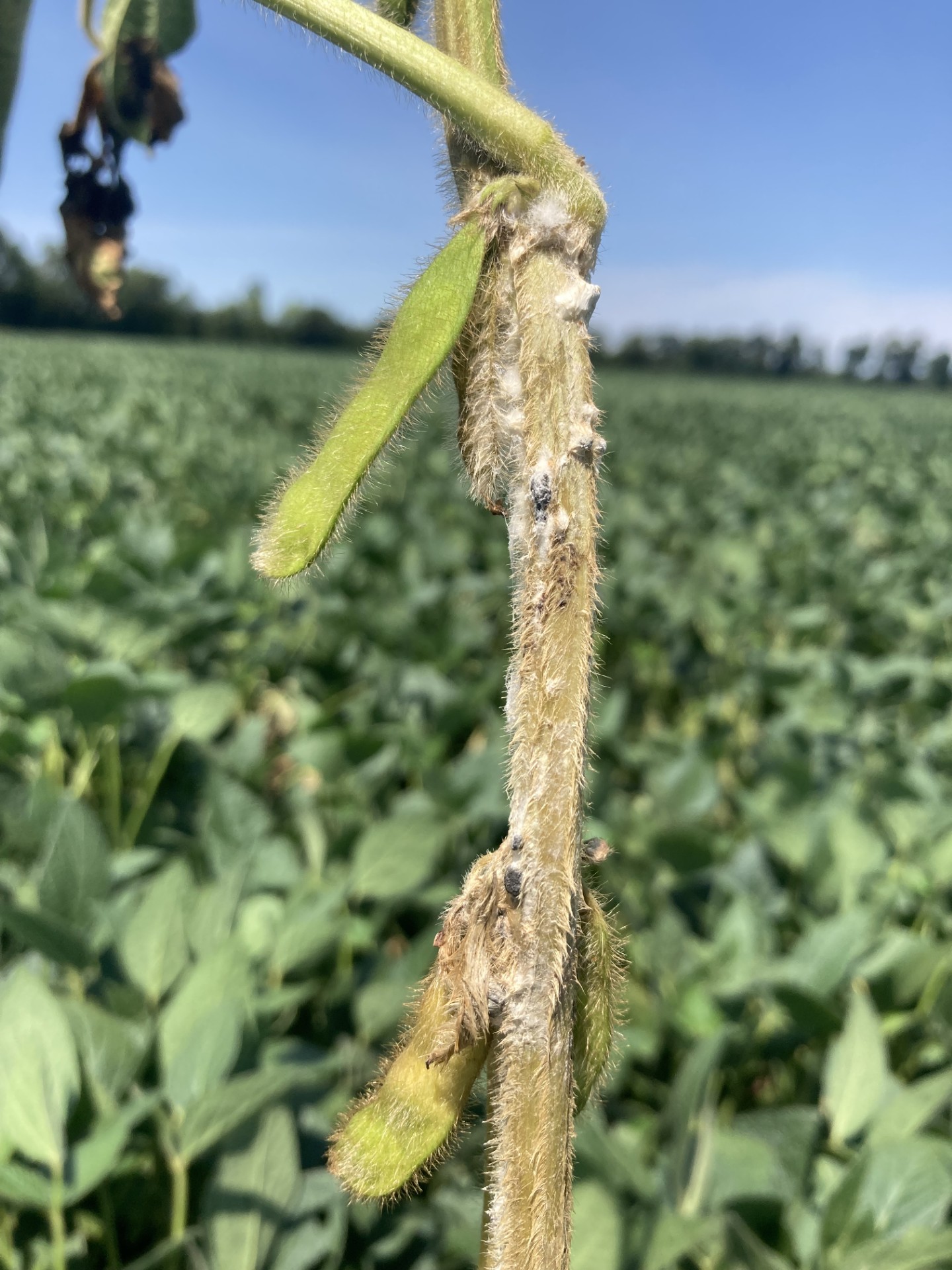
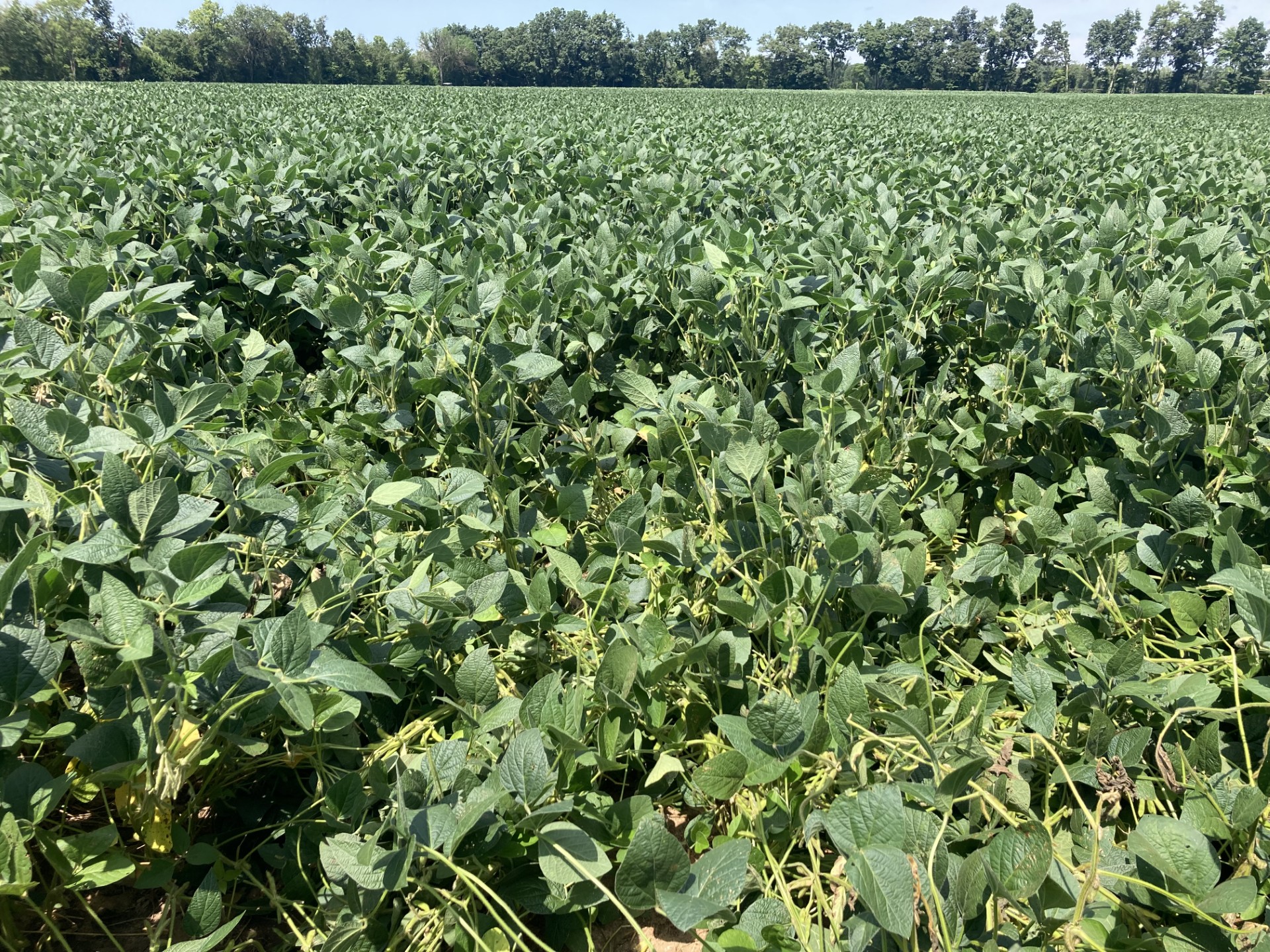
Corn is mostly between R3 (milk) and R5 (dent). At R3, the kernel is filled with milky fluid. At R4, or dough, the kernel accumulates more solid matter, which gives it a doughy texture. At R5, the kernels begin to show a dent on the outside.
Tar spot pressure continues to build throughout the state, although it has not been confirmed in more counties in southwest Michigan so far. More lesions continue to appear in fields, so it is important to be out scouting each field to assess pressure. According to the Crop Protection Network, applying a fungicide at R3 for tar spot can still be effective, but once the corn reaches R4, it may only be beneficial under severe pressure. At R5 or beyond, a fungicide application for tar spot is unlikely to be beneficial. The Tarspotter app shows mostly low tar spot risk throughout southwest Michigan for Aug. 7, 2024.
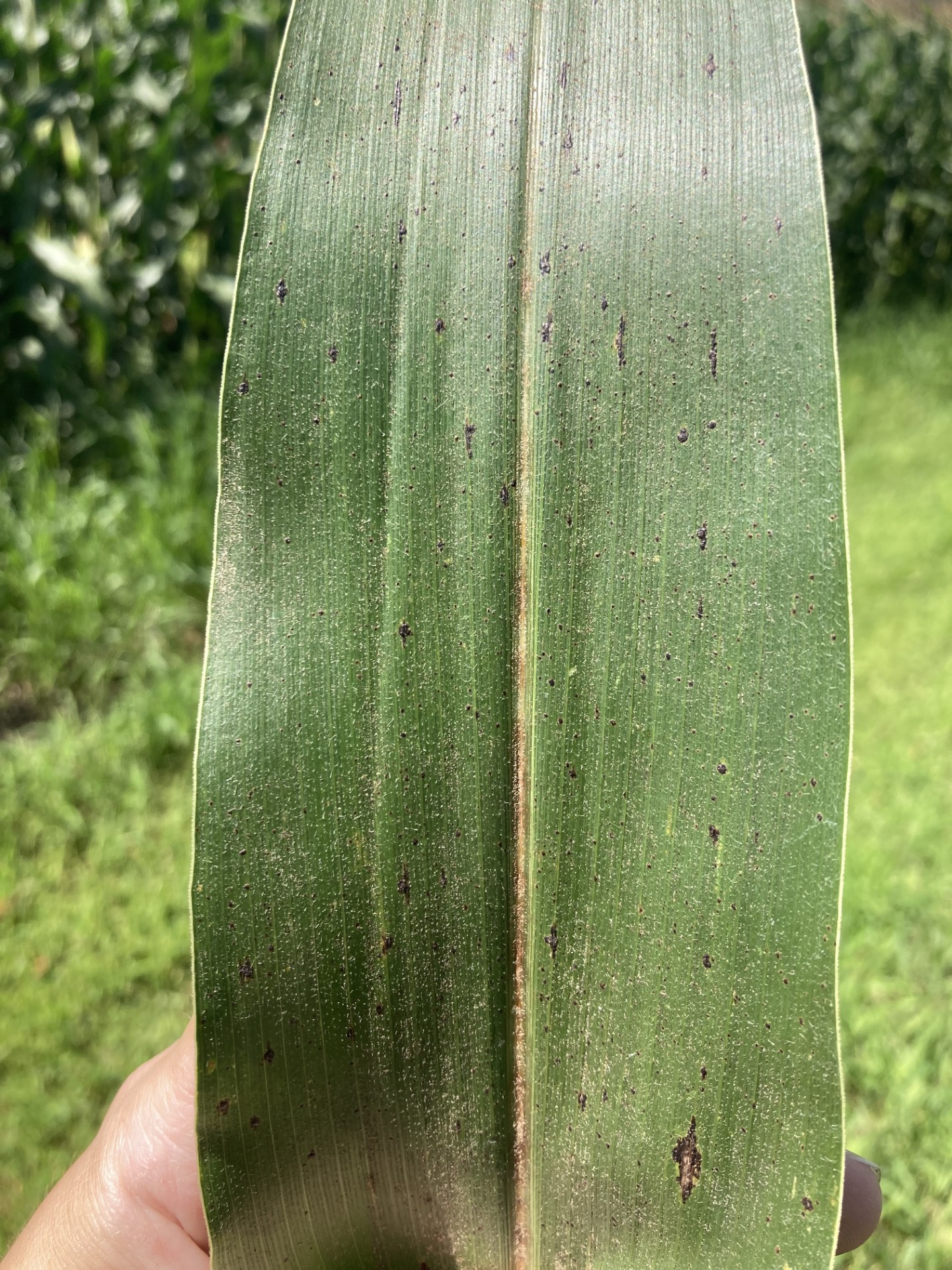
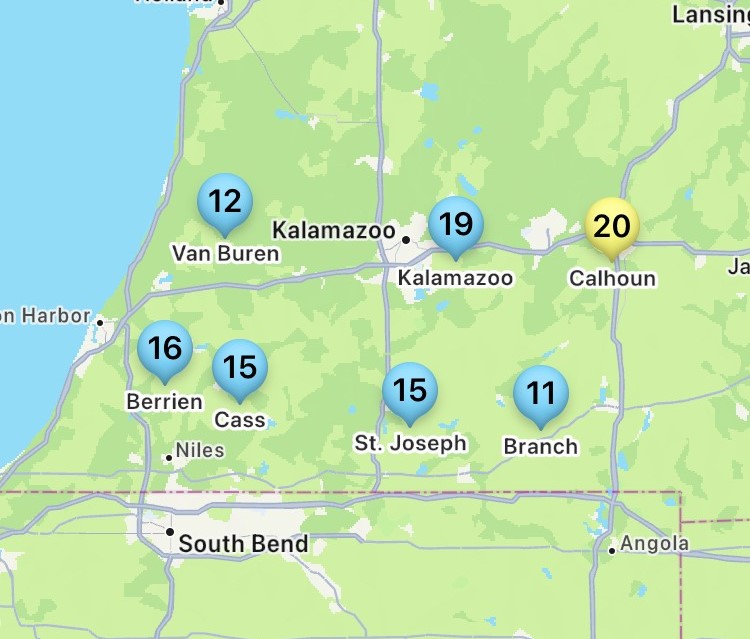
Potatoes continue to progress toward harvest. Late blight was confirmed in another field in St. Joseph County early this week, this time in the southwestern part of the county. This was a more severe infestation than the previous one reported a couple weeks ago. It occurred in an area with a lush canopy and close to a treeline that made adequate fungicide coverage a challenge.
Weekly water use
|
Estimated weekly crop water use for field crops in Michigan (in/week). |
||||
|---|---|---|---|---|
|
Crop |
Growth stage |
Constantine |
Entrican |
Hart |
|
Corn |
VT |
1.21 |
1.14 |
1.07 |
|
Silk, blister, dough, begin dent |
1.21 |
1.14 |
1.07 |
|
|
Full dent |
1.10 |
1.04 |
0.98 |
|
|
Soybeans |
R2 Full bloom |
1.21 |
1.14 |
1.07 |
|
R3 and R4 begin pod/full pod |
1.21 |
1.14 |
1.07 |
|
|
R5 and R6 begin seed/full seed |
1.21 |
1.14 |
1.07 |
|
|
R7 begin mature |
1.10 |
1.04 |
0.98 |
|
Soybeans at the R5-R6 stage continue to use water at their maximum capacity. Failing to provide adequate and timely irrigation or rainfall during this period can decrease seed size, even if water was sufficient during flowering to create pods. Maintaining soil moisture during these stages is crucial to achieve maximum yield potential. Once soybeans reach the R6.5 – R7 stage, their water use decreases, and irrigation may become less critical, especially if temperatures drop and precipitation increases. For fields with white mold, aim for fewer irrigation events with higher rates of about 1 inch to avoid excessive canopy moisture.
For corn, the dough and dent stages represent peak water use. While water use decreases at full dent, adequate moisture is still necessary to reach physiological maturity. Water stress during the early dent stages can accelerate maturity, preventing the crop from reaching its maximum yield potential. Try to use irrigation scheduling tools and weather forecasts to plan your irrigation events effectively.
The table above presents estimated crop water use for various field crops across three locations in Michigan. This data helps irrigation management decisions by showcasing potential crop evapotranspiration, calculated based on reference evapotranspiration and crop coefficients for each crop growth stage. It is crucial to note that crop water use values vary across regions due to differences in weather conditions, growth stages, agronomic practices and soil properties.
When using these values for irrigation scheduling, be mindful that they assume all applied irrigation water will be utilized by the plants without any loss. Additionally, these values do not account for any precipitation that may occur during the week of calculation. For more tools and information on irrigation scheduling tools, please refer to: Irrigation Scheduling Tools.
Reference evapotranspiration data was obtained from Enviroweather, which also offers a model for determining potential crop evapotranspiration. To access this tool, visit Enviroweather, click on "Crops," select your crop and use the potential evapotranspiration tool by choosing your nearest weather station, the latest date of interest and other crop information.
Field Crops Virtual Breakfast Series
.jpg?language_id=1)
Tips to Improve Your Grain-ey Field Photos, presented by MSU weed science diagnostician Erin Hill, was the topic for the MSU Extension Field Crops Virtual Breakfast this week. It is common practice to take pictures of findings in the field and send them in for help identifying a weed, disease or insect. Check out the Virtual Breakfast recording to find out how to take better pictures for diagnosticians. Recordings of this and all the Virtual Breakfast meetings are closed-captioned and available at the Field Crops Virtual Breakfast webpage and the MSU Extension Field Crops Team social media platforms: Facebook, Spotify, YouTube, Apple Podcasts and Twitter.



 Print
Print Email
Email




